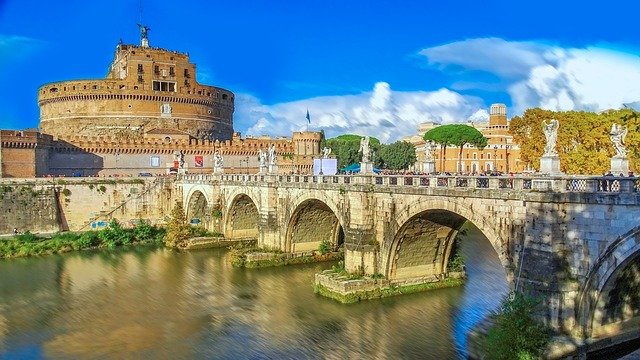Did You Know These Stunning Sights Can Be Seen Along the Danube?
The Danube River flows through ten countries, connecting vibrant cities, medieval towns, and breathtaking landscapes. This waterway offers travelers a unique perspective on European history, culture, and natural beauty. From baroque architecture to vineyard-covered hillsides, the journey reveals hidden gems and iconic landmarks that have shaped civilizations for centuries.

Stretching nearly 2,850 kilometers from Germany’s Black Forest to the Black Sea, the Danube River serves as one of Europe’s most significant waterways. A journey along this majestic river presents an opportunity to witness diverse cultures, architectural wonders, and natural landscapes that tell stories spanning millennia. Whether you’re drawn to historic castles, vibrant urban centers, or serene countryside vistas, the Danube corridor delivers memorable experiences at every bend.
Cultural Insights Along the Route from Passau to Belgrade
The stretch between Passau and Belgrade showcases remarkable cultural diversity across multiple nations. Passau itself, known as the City of Three Rivers, features stunning baroque architecture and the world’s largest cathedral organ. As you continue eastward, Vienna presents imperial palaces, coffeehouses, and musical heritage that defined European culture for centuries. Budapest offers a dramatic contrast with its thermal baths, ruin bars, and the iconic Parliament building illuminated against the night sky. Further downstream, Belgrade combines Ottoman influences with Austro-Hungarian legacy, creating a unique cultural tapestry. Each port of call reveals distinct traditions, languages, and customs that have evolved through centuries of trade, conflict, and cultural exchange along this vital waterway.
Exploring Unique Local Cuisines During the Journey
Culinary experiences along the Danube reflect the river’s role as a historical trade route and cultural crossroads. Austrian cuisine features schnitzel, apple strudel, and rich pastries paired with local wines from the Wachau Valley. Hungarian specialties include goulash, paprika-infused dishes, and the famous Dobos torte. As you approach the Balkans, flavors shift toward grilled meats, fresh cheeses, and dishes influenced by Ottoman culinary traditions. Serbian cuisine offers ćevapi, ajvar, and rakija, while Croatian coastal influences introduce Mediterranean elements. Local markets in riverside towns provide opportunities to sample regional cheeses, cured meats, and seasonal produce. Many communities maintain traditional food preparation methods passed down through generations, offering authentic tastes that cannot be replicated elsewhere.
Understanding the Historical Significance of Key Stops
The Danube has witnessed pivotal moments in European history, and its riverside settlements bear testimony to these events. Regensburg’s medieval old town, a UNESCO World Heritage site, served as a crucial trading center during the Holy Roman Empire. The Wachau Valley contains fortified abbeys and castles that protected strategic river passages during centuries of conflict. Bratislava’s castle overlooks the river from a hilltop that has been fortified since Celtic times. The Iron Gates gorge marks where the Roman Empire established its eastern frontier, with Trajan’s plaque still visible on the cliff face. Numerous fortifications, monasteries, and archaeological sites along the route illustrate how the river shaped military strategy, religious expansion, and economic development throughout European history.
Navigating Travel Logistics: Tips for a Smooth Journey
Successful navigation of the Danube route requires attention to practical considerations. Most travelers choose between traditional hotel-style vessels and smaller ships that can access narrower passages. Peak season runs from April through October, with spring and fall offering milder temperatures and fewer crowds. Passport requirements vary depending on your route, as the river crosses both European Union and non-EU countries. Some nations require separate visas for certain nationalities, so verification well in advance prevents complications. Currency also changes along the route, with euros accepted in Austria, Germany, and Slovakia, while Hungary, Serbia, and other countries use their own currencies. Weather can vary significantly, particularly in autumn and spring, so layered clothing and waterproof gear prove essential. Shore excursions typically involve walking on cobblestone streets and uneven terrain, making comfortable footwear important for exploring historic districts.
Personal Growth Through Travel: Lessons Learned on the Road
Journeys along the Danube often provide more than scenic views and historical knowledge. Extended travel through multiple countries challenges assumptions and broadens perspectives on cultural differences. Navigating language barriers, adapting to varying customs, and experiencing different approaches to daily life foster flexibility and problem-solving skills. Many travelers report increased confidence in handling unfamiliar situations and greater appreciation for cultural diversity. The slower pace of waterway travel, compared to air or rail transportation, encourages mindfulness and reflection. Conversations with fellow travelers from various backgrounds create opportunities for meaningful connections and shared experiences. Witnessing how communities along the river have preserved traditions while adapting to modern challenges offers insights into resilience and cultural continuity. These experiences often inspire travelers to approach their home communities with fresh perspectives and renewed curiosity about the world.
Conclusion
The Danube River corridor presents a remarkable combination of natural beauty, historical significance, and cultural richness. From the baroque splendor of Passau to the vibrant energy of Belgrade, each segment of the journey offers distinct experiences and insights. The diverse cuisines, architectural styles, and local traditions encountered along the route reflect centuries of interaction between different peoples and civilizations. Beyond the tangible sights and experiences, travel along this historic waterway provides opportunities for personal reflection and growth. Whether your interests lie in history, culture, cuisine, or simply experiencing new landscapes, the Danube delivers memorable encounters that extend far beyond typical tourist experiences.




